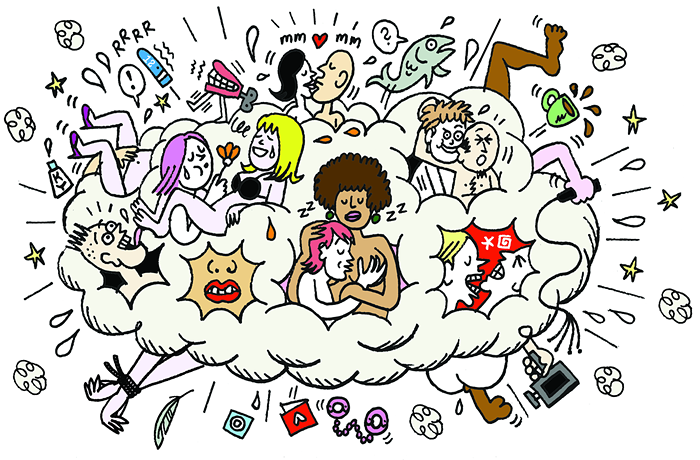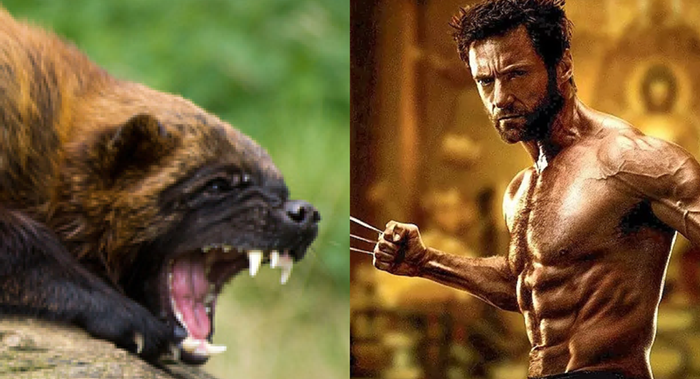“Dear Sir,” begins the membership form, “We have been requested by one of your personal friends to get in touch with you, and inform you of this organization.” A list of questions follows.
“What is your age? What is your occupation? Where were you born?”
And:
“Were your parents born in the United States of America? Are you a gentile or a Jew? Are you of the white race or the colored race? Do you believe in the principles of PURE Americanism?”
And:
“Do you believe in White Supremacy?”
The small print at the bottom of the form reads, “PRINTED BY THE KU KLUX PRESS.” A faded stamp identifies it as being printed in Medford, Oregon.
The Ku Klux Klan was a political machine, a terrorist organization, and a pyramid scheme. And for a few years in the early 1920s, it was one of the most powerful political groups in Oregon.
The “Second” Klan
“The Klan is a product of the Civil War,” says Darrell Millner, a professor emeritus of history at Portland State University. “The South lost the war, but they won the peace. And the Klan is a reason they won the peace.... It accomplished in the seven years following the Civil War what Robert E. Lee wasn’t able to do.”
“It was literally a terrorist organization,” says Linda Gordon, a professor of history at New York University and author of The Second Coming of the KKK, “that used lynching and other forms of violence to make sure that emancipation was not going to give African Americans equality or even any political or civic rights.”
The first version of the Klan is the one portrayed in D. W. Griffith’s 1915 film The Birth of a Nation, and was made up of more than a few former Confederates. The stories one usually hears about the original version of this group center on efforts by former Unionists to stomp them out.
“The traditional American history narrative,” says Millner, “focuses on the attempts of the radical Republicans, and to a degree the establishment Republicans like Ulysses S. Grant, to destroy the Klan.... But the reality of the first Klan is that [the organization] became unnecessary—because they achieved all of their objectives.”
In Millner’s reading of history, the first KKK essentially became obsolete.
“When you have [local officials] enforcing the kind of policy and objectives that drove the formation of the Klan,” he says, “you don’t need night riders anymore.”
Poll taxes, segregation, and racist Jim Crow legislation became the law of the land.
Gordon agrees that the textbook version of the Klan simplifies things a bit too much.
“It did not fade,” she says. “They were lynching people until the 1930s and afterward. What’s new about the second Klan was that it became far, far bigger, and that its strength was in the northern and western states—not the South. It’s because of those differences that people call it the second Klan. It’s not that the first Klan died away.”
One of the most significant western states where the “second” Klan would expand was Oregon.

The Klan Arrives
“The guy who spread the virus to the Beaver State was named Luther Powell,” says Finn John, an Oregon State University instructor and author of
Wicked Portland. (Full disclosure: I’ve collaborated with John on “Stumptown Stories,” a public history lecture series.) “He showed up in 1921.... He was a real salesman.”
According to John, Luther Powell wasn’t just a bigot—he was also a huckster and a scam artist. For him, starting Klan chapters wasn’t just a way to violently eradicate anyone who didn’t fit into his vision of Americanism: It was also a way to make a buck.
“It was a huge profit-making business, and a pyramid scheme,” Gordon says. “Recruiters could keep 40 percent of the initiation fee for new members they recruited. Then that new member could go and recruit other new members and keep 40 percent.”
The initiation fee was $10. According to the Bureau of Labor Statistics’ inflation calculator, $10 in 1920 would be just under $128 today.
Powell started Klan chapters in California, Idaho, Oregon, and Washington, and even attempted to export the organization to British Columbia—but was denied entrance at the Canadian border. Powell’s Oregon Klan started in Medford, and just like in his other chapters, he was at the top of a pyramid made up of people who could afford to enroll in an expensive hate group.
Another element of a conventional (and, let’s be honest, comforting) historical narrative is that the Klan was merely the province of highly motivated, uneducated extremists.
“For a long time, the initial analysis was that the Klan represented disaffected, rural, parochial, anti-modern kind of folks,” says Robert Johnston, a professor at the University of Illinois at Chicago and author of The Radical Middle Class, about popular movements in 1920s Portland.
“The second Klan was stronger in cities, and the [participants] were very modern,” he continues. “There was strong middle-class and lower middle-class representation.”
According to Johnston, the Klan had a strain of populism running through it—one that worked hand-in-hand with racism and xenophobia, positioning itself as standing against forces of elitism, foreign influence, and supposed moral decay.
“[It] was a populist coalition that didn’t necessarily exclude elites, but was suspicious of elites,” Johnston says. “It reached folks who were skilled craftsmen, had steady jobs, were small business owners... that kind of thing.”
“There may have been anywhere from three to six million men who joined the Klan at any point in the 1920s,” says David Horowitz, a professor at Portland State and the author of Inside the Klavern: The Secret History of a Ku Klux Klan of the 1920s. “By 1923, there were Klan chapters in just about every population center in Oregon. One estimate says that there were more Klansmen per population in Oregon than in any other state.” Horowitz notes that Oregon had about 50,000 Klansmen in the 1920s, but the state only had about two million residents at the time.
Looking for New Enemies
Oregon presented something of a challenge for the Ku Klux Klan. It wasn’t a lack of racial animus—Oregon had a series of anti-Black laws stretching back to its founding. Rather, there was a lack of visible enemies. When the Klan arrived in the state, there were some African Americans, but not enough to turn into a popular, visible enemy.
“The first thing the Klan did was fuse religious bigotry with racial bigotry,” says Gordon. “While they never stopped attacking African Americans, they added Catholics and Jews to the enemies list.”
According to Gordon, that anti-religious bigotry had less to do with theological debates or philosophical notions about the nature of God, and much more about national origin and culture.
“The second Klan was in part a response to massive immigration into the United States from the 1880s up to 1924,” says Gordon, “and those immigrants were primarily not Protestant.”
Anti-Catholicism and Anti-Semitism went hand-in-hand (and were shorthand for) with closing the border, pushing back against immigrants, and preserving America for the “right” kind of people.

Electoral Victories
Two major Oregon politicians are strongly associated with the KKK: Walter Pierce, the 17th governor of the state, and George Baker, Portland’s longest-serving mayor.
Pierce and Baker were very different politicians. Pierce, according to Johnston, was more populist and likely to be embraced by progressives of the time. Baker was conservative and pro-business. Both of them stayed consistent with Klan ideology.
“Pierce always had a very strong anti-Catholic strain,” says Johnston, “and while Baker used that, he wasn’t as emphatic about it as Pierce. But in terms of representing a strong reaction to Bolshevism and radicalism, that was Baker’s wheelhouse—and the Klan’s wheelhouse, too.”
According to Millner, we know Pierce was a card-carrying Klan member.
“It was clear he was the Klan candidate,” Millner says, “and was comfortable with the Klan agenda—but what made his case a little bit different is that we eventually found his Klan membership card in La Grande [in northeastern Oregon], where he was from. So we don’t have to speculate about him.”
Pierce signed legislation to economically hobble Oregon’s immigrant communities. “[Pierce] signed an Alien Land Bill in 1923,” says Horowitz. “The model of this had come from California which had passed it in 1913, and it prohibited immigrants from owning land in their own name. It was mainly directed at Japanese ranchers and farmers.”
Baker’s direct affiliation is harder to prove. He was photographed with hooded Klan members, but historians have never found definitive proof of whether he actually paid any dues to the organization.
“I don’t think [Baker] was a member himself,” says Millner, “but he was certainly willing to carry water for the Klan, and it was politically expedient for him to do so at the time. Whether he was a card-carrying member is not really the most important question.”
The Klan was also able to mobilize Oregon’s population to pass a piece of legislation that it had tried (and failed) to make the law of the land in every other state: the Oregon Compulsory Education Act of 1922. Passed by popular vote, it was the Klan’s signature legislation, making public education mandatory for all Oregon children. The bill’s rhetoric was filled with praise for public education and the value of schools—but its purpose was to shut down learning institutions run by religious groups like Catholics and Jews.
The 1922 voter’s pamphlet read: “We must now halt those coming to our country from forming groups, establishing schools, and thereby bringing up their children in an environment often antagonistic to the principles of our government.” The bill passed, but the Klan soon found it had messed with the wrong people: nuns.
A group of sisters sued the state, alleging they had a right to run a school. “They were supported by the American Civil Liberties Union,” says Horowitz, “which had just been organized in 1919.”
Their case went all the way to the US Supreme Court, and in Pierce v. Society of Sisters, Justice James McReynolds wrote for the majority: “Appellees are corporations, and therefore, it is said, they cannot claim for themselves the liberty which the Fourteenth Amendment guarantees.... But they have business and property for which they claim protection. These are threatened with destruction through the unwarranted compulsion which appellants are exercising over present and prospective patrons of their schools.”
The Supreme Court didn’t strike down the Klan’s centerpiece of Oregon legislation out of concern for immigrants. Instead, Gordon says, “It was overturned on grounds of what lawyers call ‘a taking’—that it was taking away property of the Catholic Church.”
Politicians like Baker and Pierce, and the passage of the Oregon Compulsory Education Act, show how the Klan in Oregon wasn’t just acting on the criminal fringe. It influenced policy.
“The Klan is a good example of how a mass social movement can have an effect on electoral politics,” says Gordon, who in this context does not use the term “social movement” as any kind of endorsement.
“Most scholars have seen social movements and electoral politics as alternatives,” she says. “But in fact, they worked very well together. The Klan elected 11 governors and 45 members of Congress, and that isn’t counting the thousands of state, county, and municipal officers. I think that’s an important thing to understand, especially in the current climate.”
Despite the defeat of the Oregon Compulsory Education Act, Gordon says the Klan took on a larger battle against immigration in the United States during the 1920s.
“And it won,” she says. “The 1924 US Immigration Act could have been written by the Ku Klux Klan.... It established quotas for different categories of people about who could be let into the United States. It ranged from very high quotas for the kind of people that the Klan would call ‘Nordic,’ to very tiny quotas for those they thought of as inferior. What the law was doing was installing a hierarchy of different populations that was exactly the hierarchy of the Klan.”
“The Klan elected 11 governors and 45 members of Congress, and that isn’t counting the thousands of state, county, and municipal officers. I think that’s an important thing to understand, especially in the current climate.” —Linda Gordon, a professor of history at New York University and author of The Second Coming of the KKK
Corruption and Hypocrisy
Alongside anti-Black and anti-immigrant rhetoric, the Klan also positioned itself as the guardian of morality. Publicly, the Klan advocated for enforcement of prohibition laws, and Johnston says they opposed Hollywood for spreading what they perceived to be lewd and immoral entertainment, often produced by Jews. Gordon adds they were also big on inviting evangelical ministers into their ranks.
“The Klan recruited an immense number of ministers,” she says. “They claimed it had 40,000 ministers who were members—though I suspect that’s an exaggeration.”
Ministers, however, could join for free.
“Many ministers saw the Klan as an ally in getting people to church and maintaining the dominance of evangelical sects,” says Gordon.
That said, despite their rhetoric about prohibition and public morality, the Klan was unable to keep itself from succumbing to corruption.
“The people who were attracted to the Klan had other flaws in addition to perverted racial views,” says Millner. “In Oregon, the Klan essentially died at its own hand.”
“The Klan had hand-picked the Multnomah County Board of Commissioners,” says Finn John. “And one of their commissioners had tried to monetize this position by putting out a bid on a series of bridge projects, including the new Burnside Bridge and the Ross Island.” Theoretically, several different contractors would bid on the projects, and the county would accept the most cost-efficient one. That’s not what happened.
“The bid was open for 24 hours as an all-or-nothing deal,” says John, who notes the whole deal was arranged so that a Klan-affiliated contractor could get a lucrative contract. “[The commission] immediately accepted [the bid] and slammed the window closed on other bidders.” Despite the county allowing bids for such a short time, a non-Klan related contractor had actually managed to get another bid in to build the Burnside Bridge. “[It] was half a million dollars cheaper than what was accepted—so, when that got around Portland, it became really clear that the county commissioners were willing to skim half a million dollars off a bridge project. And half a million dollars in 1924, that’s real money.... There was a recall election and they got booted out. The Klan never had much power after that.”
Back-room deals, corruption, and schemes to use the organization as a vehicle for self-enrichment were a major blow to the Klan in Oregon.
“They literally promised they would help police with extra-legal vigilantism,” says John, who adds the hard, law-and-order rhetoric the Klan employed often appealed to nonmembers.
“The Klan ran these squeaky-clean ultra-Protestant drain-the-swamp type campaigns,” says Johnston, “and then—surprise, surprise—they tried to feed themselves at the trough.”
By the end of the 1920s, the KKK still existed in Oregon—but it was no longer the overpowering force it once was.
Times Don’t Change
It’s easy to see the Klan’s long shadow looming over us. I asked Darrell Millner if anything had really changed. He gave me a look. Our conversation paused for a beat.
“One thing that will help people understand the difference between the racial dynamics and realities of our generation is that we devote attention to the alt-right, various Klan chapters, and Steve Bannon,” Millner says. “But the difference is, in the 1860s in Oregon, those people were in control. Those were the people in charge of Oregon life. Imagine Steve Bannon as governor and on the local school board. Try to imagine if the alt-right was actually in charge.”
I replied that it was not hard to imagine.
“Man,” he said to me, “we just had a Black president for eight years. People still don’t understand the significance of that.”
“I’m sorry,” I said. “It’s easy to be cynical.”












